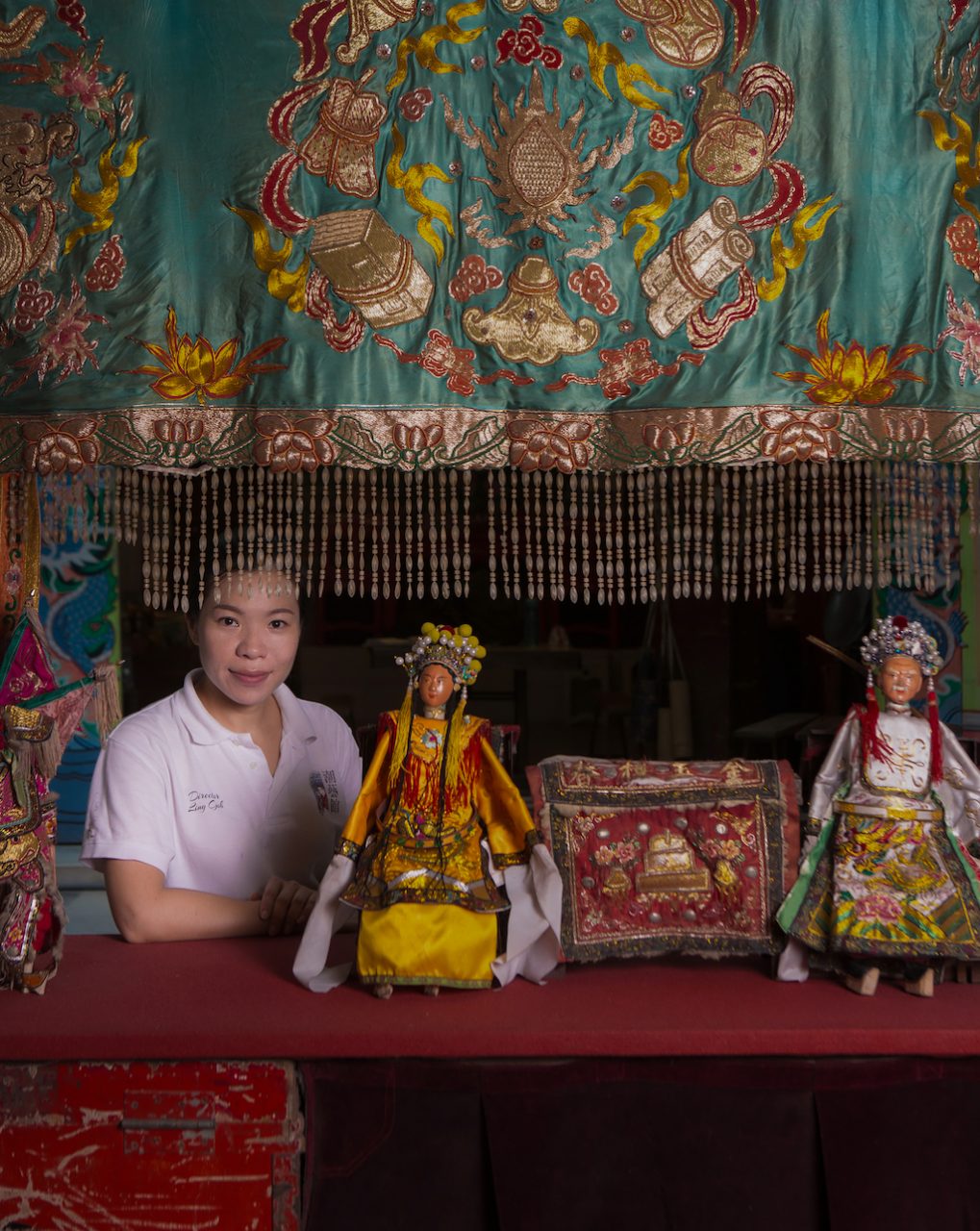Ling Goh smiles shyly when asked about her future, and says she recognises it is marked by uncertainty. But with clear conviction, the 38-year-old adds that she has no plans to change course. The Penang native has dedicated 30 years of her life to an endangered artform that survives in Malaysia only in Penang, where her company, Teochew Puppet Opera, is helping keep it alive.

Teochew puppetry originated in China during the Song dynasty (960–1279) and fuses elements of opera, theatre and comedy. When Teochew people migrated to Southeast Asia in the second half of the 19th century, they brought with them their cultural traditions, including this style of puppetry. Today, there are only a handful of Teochew performers left in Penang. Ling Goh is the fourth generation of puppeteers in her family. In 1989, at eight years old, she began performing at the encouragement of her mother, who in that same year established the troupe Ling Goh now leads. The troupe performs several times each month at Teochew Puppet Opera House, the theatre Ling Goh opened five years ago inside a renovated shophouse in George Town. According to her, Teochew puppetry differs from other styles because the puppets are manipulated using metal rods, which gives them greater precision of movement than string counterparts.
Noblemen, monks, scholars, warriors and acrobats are among the huge cast of characters that recur in the more than 50 different plays that her troupe performs on rotation. Ling Goh prefers to pick plays she believes will appeal to young audiences.
“Older people still like Teochew puppets but we need young people to get interested so future generations watch our shows,” she says. “This is why I love my job. I feel I have a mission to protect the artform.”
Fast facts about Teochew Puppet Opera
1. 1000
The estimated age, in years, of the artform
2. 9
Number of performers involved in a typical Teochew puppet show, which comprises puppeteers, singers and musicians
3. 2
Number of weeks it takes to handcraft a Teochew puppet, made with wood and clay
SEE ALSO: The art of Indonesia’s wayang golek
This article was originally published in the August 2019 issue of Silkwinds magazine






